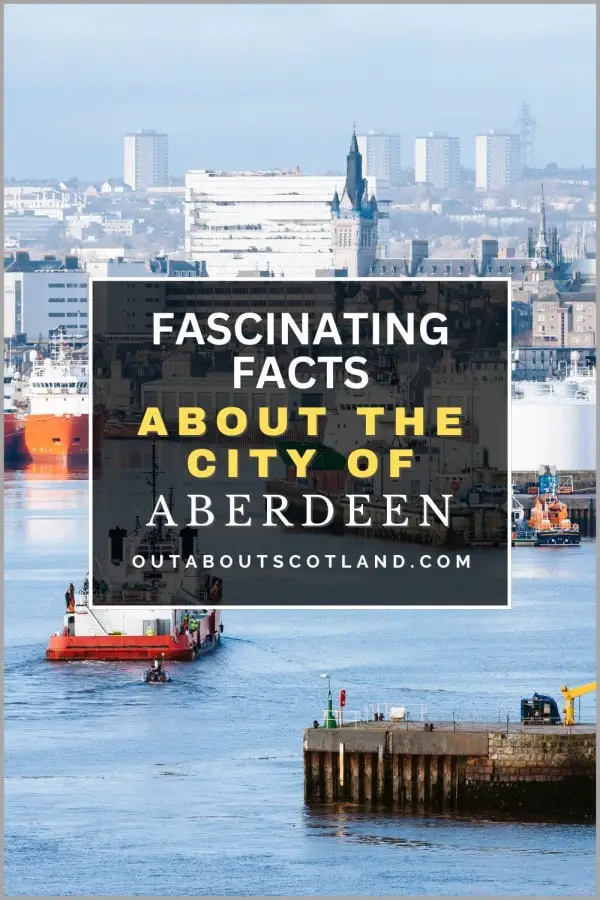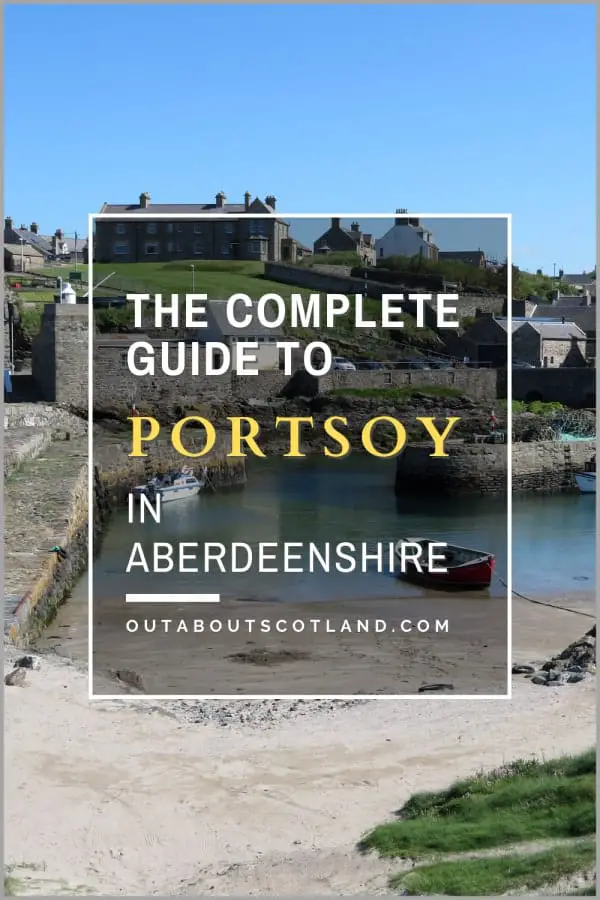Nestled against the sparkling North Sea and surrounded by the rolling fields of Grampian’s beautiful countryside lies the vibrant and historic city of Aberdeen. Known as the ‘Granite City’ due to its iconic silver-grey stone architecture, Aberdeen is a must-visit destination for all visitors to Scotland as it offers a rich tapestry of culture, history, exciting nightlife, and a number of amazing tourist attractions.
In this article, we’ll embark on a journey to uncover the top fun facts about Aberdeen from its medieval university and bustling city centre to its picturesque coastline and thriving oil and gas industry.
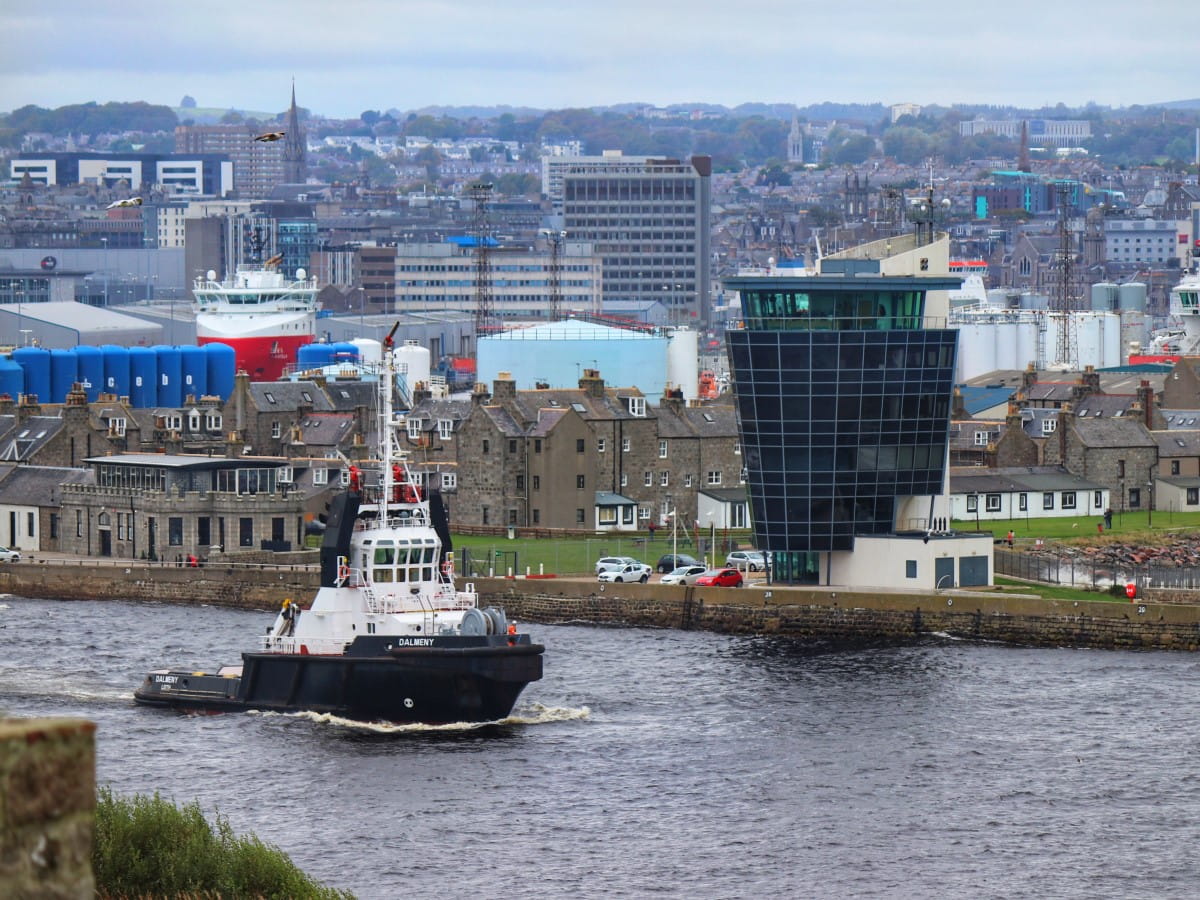
Facts About the City of Aberdeen
Hunter-gatherers were the first people to live in Aberdeen, which has a rich history and culture that goes back an incredible 8,000 years. Over the centuries, the city has grown from a collection of small fishing villages to a wealthy maritime and industrial centre, and it now plays a significant role in Scotland’s economy.
Though not generally considered a tourist destination, Aberdeen is chock-full of beautiful buildings like St. Machar’s Cathedral, a stunning 12th-century church, and King’s College – founded in 1495 – which later merged with Marischal College in 1860 to form the University of Aberdeen.
This university is one of the oldest in the United Kingdom and continues to be one of Britain’s foremost centres of excellence in education and research. Aberdeen’s architecture is primarily Victorian and is characterised by its use of local grey granite, which gives the city its distinctive appearance and has earned it the nicknameite city.
Visitors to Aberdeen will find numerous attractions that cater to a wide variety of interests, from the Aberdeen Art Gallery which showcases an extensive collection of paintings and sculptures, to Duthie Park, a sprawling green space with beautifully manicured gardens, ponds, and a glass-walled winter garden housing exotic plants from around the world.
In addition, the city’s coastal location offers visitors a number of great walks, and the picturesque Aberdeen Beach is a must-visit destination for both locals and tourists.
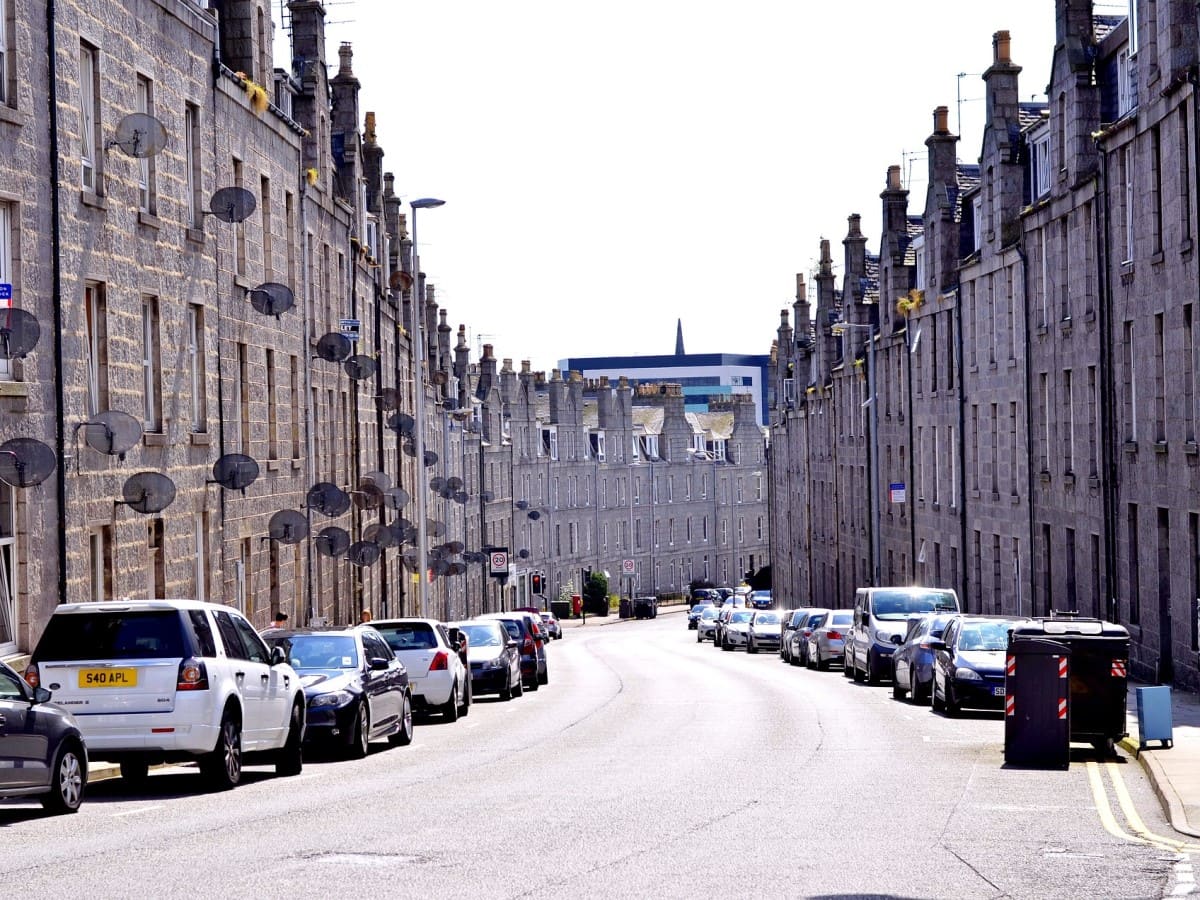
Protect Your Family From Scotland's Biting Midges
- Powerful, reliable protection for up to 8 hours
- Water- and sweat resistant
- Repels midges, mosquitoes, horse flies, sand flies, fleas and ticks
- Safe for use on adults, children over 30 months and pregnant women
- Non-sticky, moisturising with a pleasant fragrance
- Packaging may vary
Aberdeen Tours
Facts About Historic Places in Aberdeen
History and Heritage. The earliest people who settled in Aberdeen can be traced back to the Stone Age, around 8,000 years ago. Evidence of their presence has been found through archaeological discoveries such as flint tools and remains of early settlements at sites like Tullos Hill in Aberdeen.
By the Bronze Age (around 4,000 years ago), the area witnessed the construction of stone circles and burial cairns which are still visible today, while the Iron Age (about 2,500 years ago) saw the development of hill forts in the surrounding area.
Marischal College. Marischal College is an architecturally significant building that originally served as the primary campus for the University of Aberdeen. Founded in 1593 by George Keith, the 5th Earl Marischal of Scotland, the college was intended to provide a centre for higher education in the northeast of Scotland.
Marischal College boasts a stunning granite facade and is an iconic landmark in the city. Over the years, the structure has undergone several additions and renovations, with Alexander Marshall Mackenzie’s work in the early 20th century being the most notable.
University of Aberdeen. The University of Aberdeen is a prestigious university situated near the city centre. Established in 1495, it’s the third-oldest university in Scotland, the fifth-oldest university in the UK, and is renowned for its history and world-class teaching and research facilities. The university offers a diverse range of undergraduate and postgraduate programmes across various disciplines, including arts, humanities, sciences, engineering, and medicine.
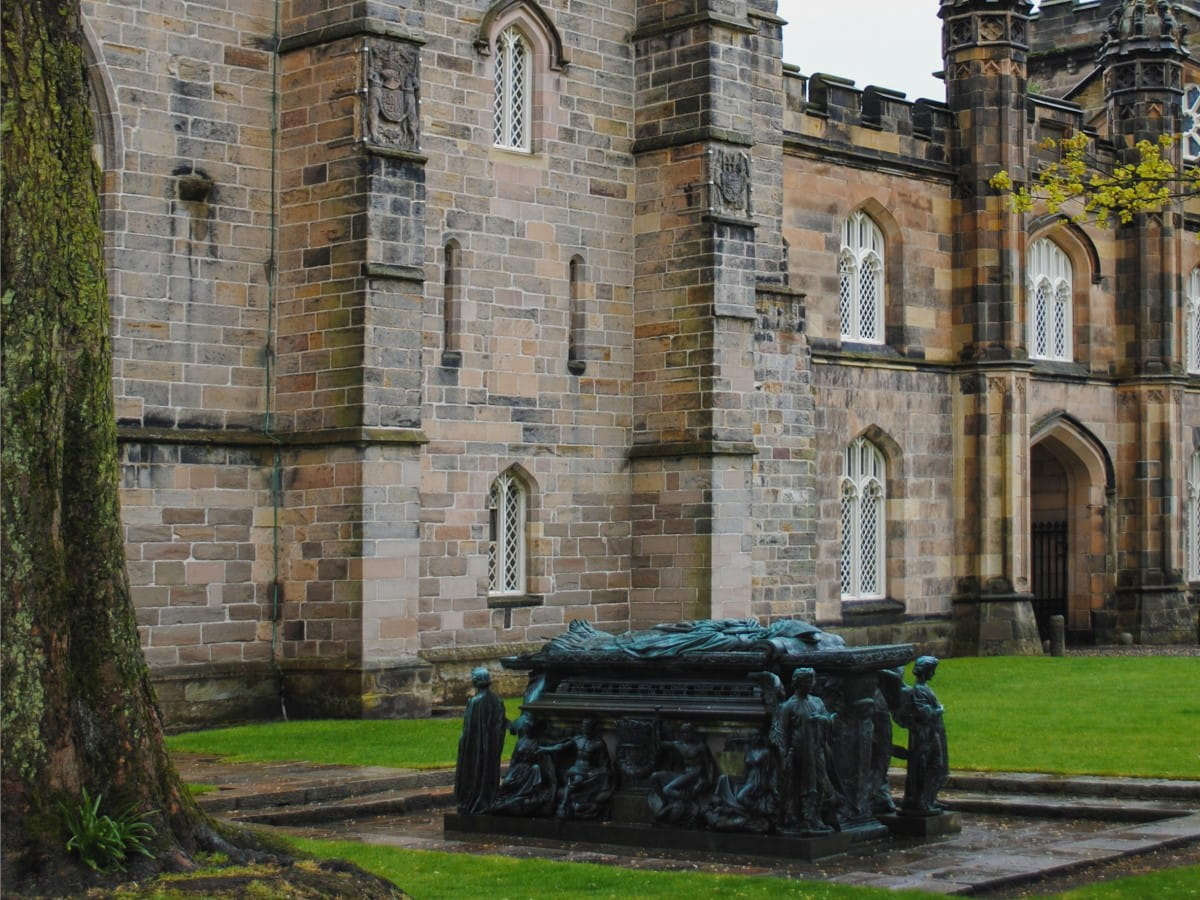
Footdee. Footdee, often referred to as ‘Fittie’, is a historic fishing village in Aberdeen that was established in the early 19th century. Footdee was initially designed to provide a home for local fishermen and their families and was built at the harbour’s entrance, offering residents easy access to the North Sea.
The distinctive layout and architecture of Footdee set it apart from other areas in Aberdeen. The village is characterized by its grid of squares, each containing a cluster of quaint cottages arranged around a central garden area. Footdee has maintained its character over the years despite the rapid modernization of Aberdeen, and as a result, it’s now a popular tourist attraction.
Aberdeen Harbour. Aberdeen Harbour is a bustling, historic port that was established over 900 years ago, making it one of the oldest continually-operational harbours in the United Kingdom. The harbour plays a vital role in the city’s economy and serves as a trading and fishing hub as well as a major support centre for the North Sea oil and gas industry.
Situated at the mouth of the River Dee, Aberdeen Harbour boasts a strategic location that contributed to its growth and development after the rise of offshore oil extraction in the 1970s.
Duthie Park. Duthie Park is a beautiful and historic public park covering an area of 44 acres. Miss Elizabeth Duthie, a local philanthropist, donated the park to the city and it first opened its doors in 1883. It has since become a popular destination for both locals and tourists alike and offers an array of recreational and leisure activities.
The park is known for its manicured lawns, flower beds, and picturesque walking paths as well as the David Welch Winter Gardens. The winter gardens are one of Europe’s largest indoor gardens and boast a vast collection of exotic plants and flowers from around the world. Visitors to Duthie Park can enjoy various amenities, including a boating pond, children’s play areas, sports facilities, and a café.
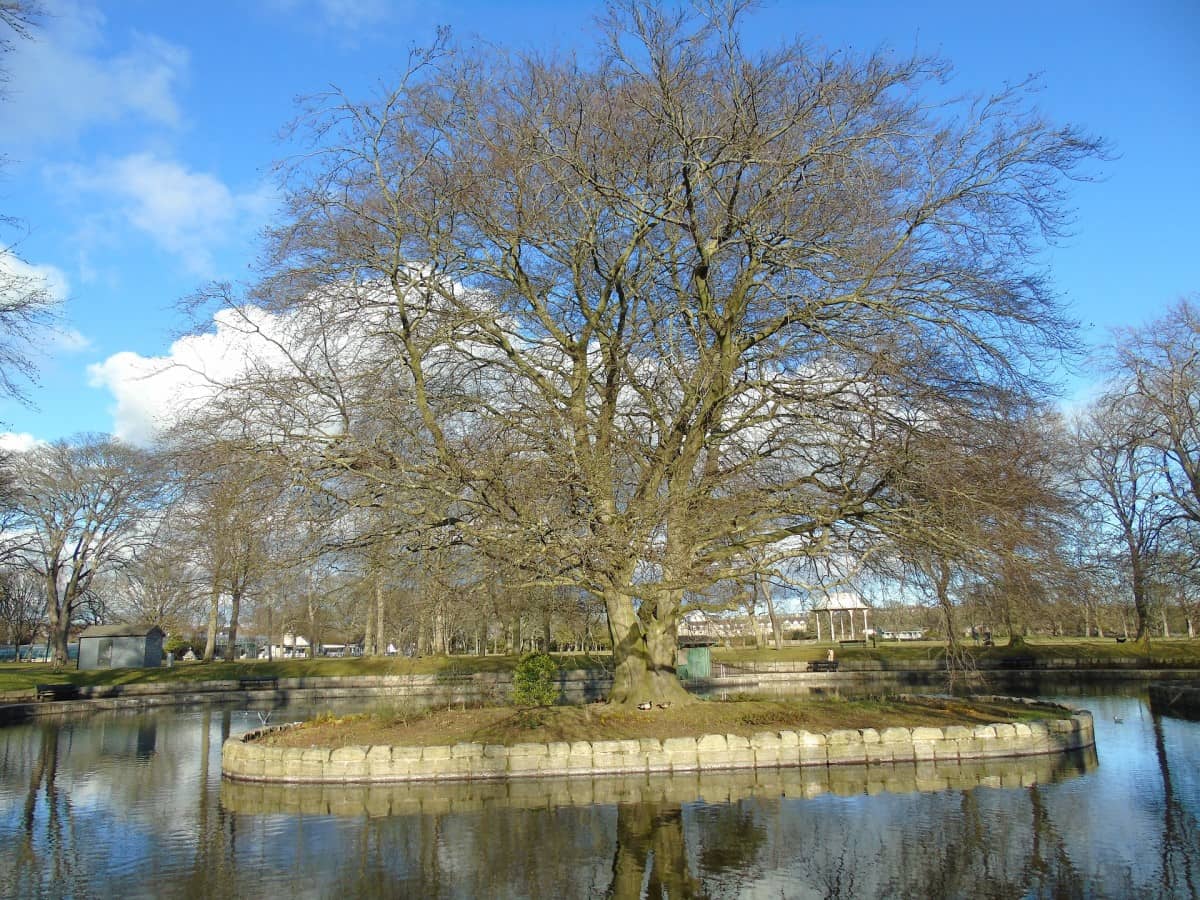
Historic Bridge. The Brig o’ Balgownie, also known as the Bridge of Don, is a historic medieval bridge that spans the River Don. It was built in the late 13th century and features a single Gothic arch with a span of 39 feet (12 metres). The Brig o’ Balgownie is an important historical landmark, as it has stood for over 700 years and is one of the oldest surviving bridges in Scotland.
It played a significant role in the development of Aberdeen as it provided a vital crossing point for trade and travel between the two banks of the river, but it ceased to be a major route when a new bridge was built in 1830.
Book Tours in Scotland
Facts About Culture in Aberdeen
Aberdeen Art Gallery. Aberdeen Art Gallery is a renowned public art gallery that has been attracting art enthusiasts since its opening in 1885. Alexander Marshall Mackenzie created the stunning Victorian structure that houses the gallery, and between 2015 and 2019 it underwent a significant renovation to modernize its facilities.
The gallery boasts an extensive collection of artwork including paintings, sculptures, and ceramics from a wide range of artists, both local and international. Some of the highlights include works by Monet, Renoir, Francis Bacon, and Henry Raeburn.
Festivals and Events. Aberdeen hosts a variety of annual festivals that celebrate diverse aspects of culture, arts, and local heritage. Some popular festivals include the Aberdeen Highland Games and Aberdeen Restaurant Week. Other events that attract worldwide audiences are Grampian Pride, the RGU Film Festival, the Scottish Snowdrop Festival, and the Nuart Street Art Festival. The city also hosts the Granite Noir festival, which celebrates the city’s love of crime-writing fiction.
Granite City. Aberdeen is often referred to as the ‘Granite City’ due to its many grey stone buildings constructed from locally quarried granite. This unique characteristic gives the city a shimmering appearance when the sun shines (especially after a rainfall), earning it another nickname, ‘The Silver City’.

The Doric Dialect. The Doric dialect, also known as Aberdonian or Northeast Scots, is a distinct variety of the Scots language spoken primarily in Aberdeen and northeast Scotland. Part of the West Germanic language family, Doric shares commonalities with Old English, Friesian, and Norwegian and has evolved over the centuries to develop a unique vocabulary, pronunciation, and grammar.
The Doric dialect reflects the region’s influences from fishing and farming and includes a wealth of unique words and phrases that pertain to these industries and the local way of life.
General Facts About Aberdeen
Golfing Paradise. Aberdeen is home to several golf courses that all offer excellent opportunities for enthusiasts to indulge in the sport. Some of the top courses include:
Royal Aberdeen Golf Club: Established in 1780, this is the sixth-oldest golf club in the world. The club’s Balgownie Links course features challenging holes, rolling dunes, and breathtaking views of the North Sea.
Murcar Links Golf Club: Founded in 1909, this championship golf course is known for its challenging layout. Murcar Links has hosted several prestigious events and was the host club for the 2021 Scottish Men’s Amateur Championship.
Hazlehead Golf Course: Situated within Hazlehead Park, this golf complex features three 18-hole courses: the MacKenzie Championship Course, the Pines Course, and the Nine-Hole Course. The courses have beautiful woodland scenery and are open to players of all skill levels.
Oil and Gas Industry. Often referred to as the ‘Oil Capital of Europe’, Aberdeen has a history in the industry that dates back to the discovery of North Sea oil reserves in the late 1960s. The city’s position on the northeast coast of Scotland, coupled with its excellent harbour facilities courtesy of its age-old fishing industry, played a crucial role in the development and extraction of these reserves.
Over the years, the city has established itself as a hub for research and innovation and institutions like the University of Aberdeen and Robert Gordon University have developed a number of courses to train newcomers to the oil and gas industry.
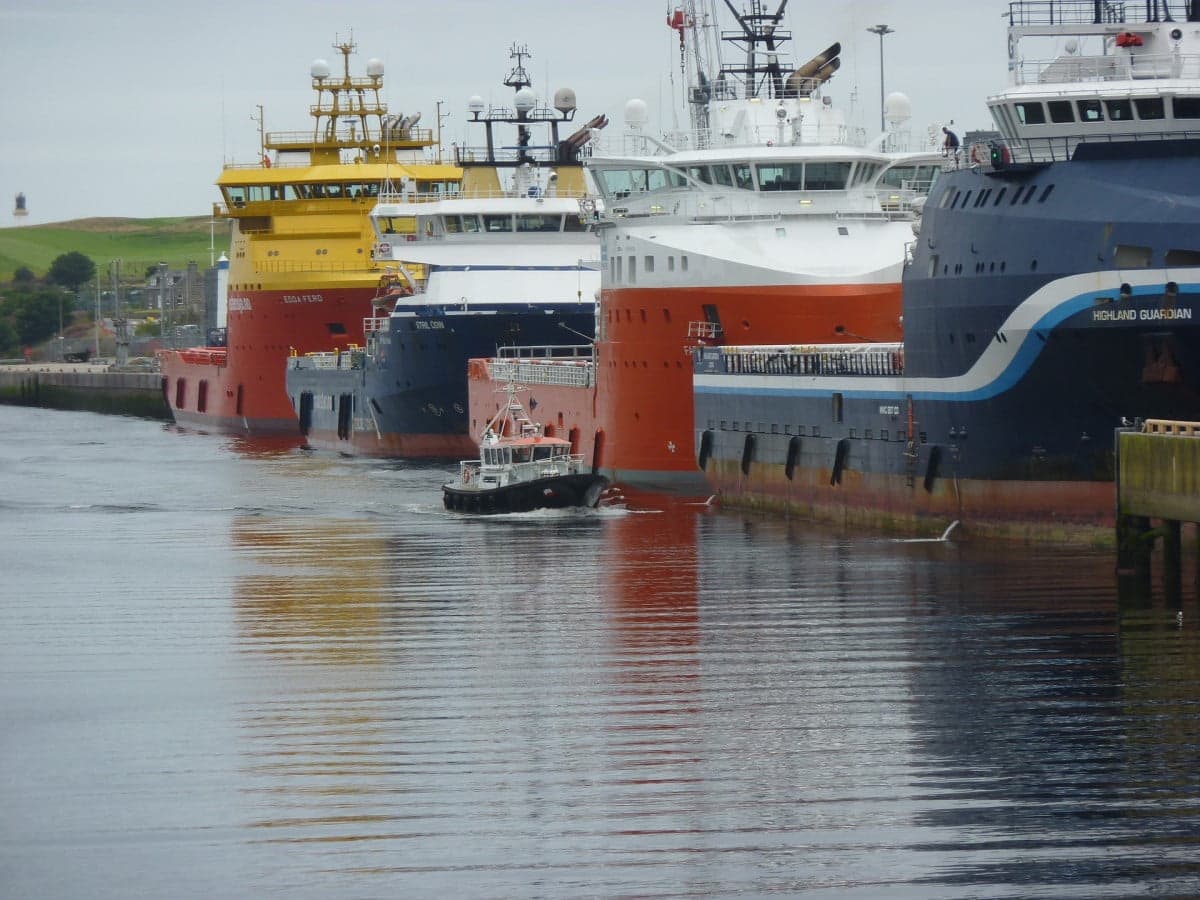
Aberdeen International Airport. Aberdeen International Airport is located in Dyce, a suburb of Aberdeen approximately 5 miles northwest of the city centre. The airport serves as a hub for domestic and international flights and handles over three million passengers annually. Established in 1934, Aberdeen International Airport has grown to become the third-busiest airport in Scotland, offering flights to more than 40 destinations across Europe and the United Kingdom.
Aberdeen International Airport is crucial for the oil and gas industry as it supports helicopter operations for offshore platforms. The airport also plays a vital role in the local economy and is a major employer while also serving as one of the main gateways into Aberdeenshire.
Aberdeen Beach. As a coastal city, Aberdeen boasts several beaches that attract both locals and tourists alike. The most popular is Aberdeen Beach (the main beach in the city), which stretches for around 1.5 miles along the coastline north of the harbour. Known for its golden sands and scenic promenade, Aberdeen Beach is a great spot for leisurely walks, sunbathing, and water sports. The beach is also home to the popular Codonas Amusement Park and the Beach Ballroom.
Another very popular beach is Balmedie Beach which is situated north of the mouth of the River Don. This beach is part of Balmedie Country Park which provides visitors with lots of opportunities for birdwatching and walking.
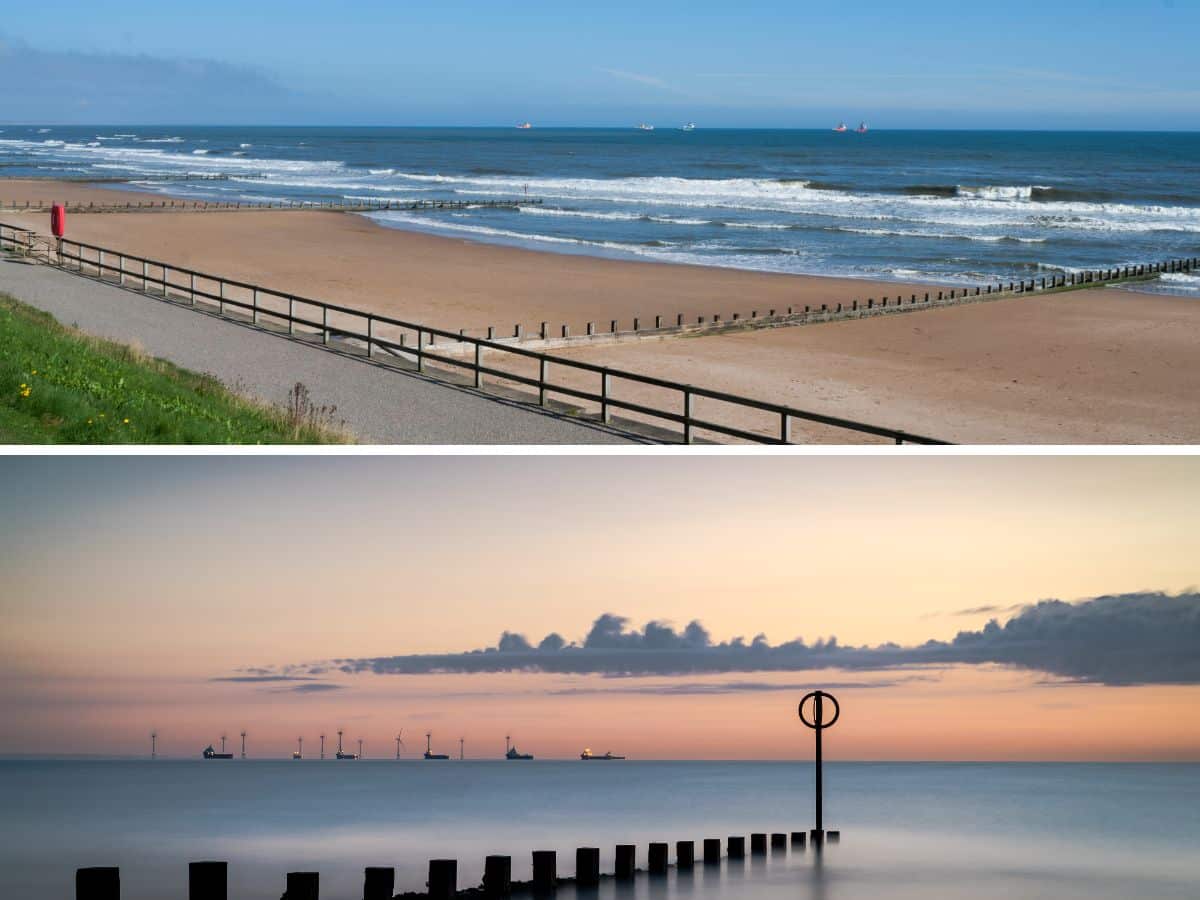
Protect Your Family From Scotland's Biting Midges
- Powerful, reliable protection for up to 8 hours
- Water- and sweat resistant
- Repels midges, mosquitoes, horse flies, sand flies, fleas and ticks
- Safe for use on adults, children over 30 months and pregnant women
- Non-sticky, moisturising with a pleasant fragrance
- Packaging may vary
Facts About People From Aberdeen
Annie Lennox. The iconic Eurythmics singer was born in Aberdeen in 1954 and is a modern symbol of the city’s rich musical heritage. She has sold over 11,260,000 albums worldwide and has been awarded numerous accolades, including eight Brit Awards and four Grammys. In addition to her musical achievements, she’s also been recognised for her tireless philanthropic work, particularly in the field of HIV awareness.
Sir Thomas Sutherland. The founder of one of the world’s largest banks, HSBC, was born in Aberdeen in 1834. After a successful career in the British colonial administration, he started the Hong Kong and Shanghai Banking Corporation in 1865. This institution would later evolve into the global banking giant we know today as HSBC, which is now one of the world’s leading financial services providers.
Denis Law. The legendary Scottish footballer was born in Aberdeen in 1940. He played for multiple clubs including Manchester United where he became a key part of the team’s success. Law scored a whopping 237 goals in 404 appearances for the club, earning him the nickname ‘The King’ among fans. In 1964, he was awarded the prestigious Ballon d’Or, becoming the first and only Scotsman to win the honour.
Lord Byron. The renowned Romantic poet was born in London but received his early formal education at Aberdeen Grammar School. His mother, Catherine Gordon, was a Scottish aristocrat and heiress of the Gight estate in Aberdeenshire. Byron’s connection to Aberdeen played a significant role in his life, and the city’s rugged architecture and rich history inspired some of the poet’s most famous works.
Frequently Asked Questions
What is Aberdeen famous for?
Aberdeen is famous for several reasons, including:
1: Granite Architecture. Known as the ‘Granite City’, Aberdeen’s buildings are predominantly constructed from locally quarried granite, giving the city a distinct silver-grey appearance.
2: Oil Industry. Aberdeen is often referred to as the ‘Oil Capital of Europe’ due to its significant role in the North Sea oil and gas industry. The city has served as a hub for offshore oil and gas drilling and research since the early 1970s.
3: Universities. Aberdeen is home to the University of Aberdeen, which was founded in 1495, making it the third-oldest university in Scotland and the fifth-oldest in Britain.
4: Maritime History. With a rich maritime heritage, Aberdeen has been an important seaport for centuries. The Aberdeen Maritime Museum showcases the city’s connection to the sea, including the development of shipbuilding and fishing, as well as the city’s role in the UK’s offshore oil and gas industries.
5: Cultural Attractions. Aberdeen boasts a vibrant cultural scene with numerous art galleries, museums, and theatres. Popular cultural attractions include the Aberdeen Art Gallery and the Aberdeen Arts Centre.
What is Aberdeen’s nickname?
Aberdeen is commonly nicknamed ‘the Granite City’, which derives from the widespread use of locally quarried grey granite in the construction of many buildings within the city. The granite gives Aberdeen a distinctive appearance due to its high mica content, which sparkles in sunlight, especially when wet.
Why is Aberdeen called Aberdeen?
Aberdeen gets its name from the combination of two Pictish words: ‘aber’ and ‘deen’. Aber, in the Pictish language, means mouth of a river, while deen is derived from ‘Don’ and ‘Dee’, the names of the two rivers that flow through the city.
What industry is Aberdeen famous for?
Aberdeen is best known for its thriving offshore oil and gas industry. Often referred to as the ‘Oil Capital of Europe’, the city has been a major centre for North Sea oil and gas production since the 1970s.
The abundance of offshore oil reserves and the city’s strategic location have played a significant role in shaping both Aberdeen’s and Scotland’s economies, attracting numerous businesses and creating thousands of jobs in the process.



